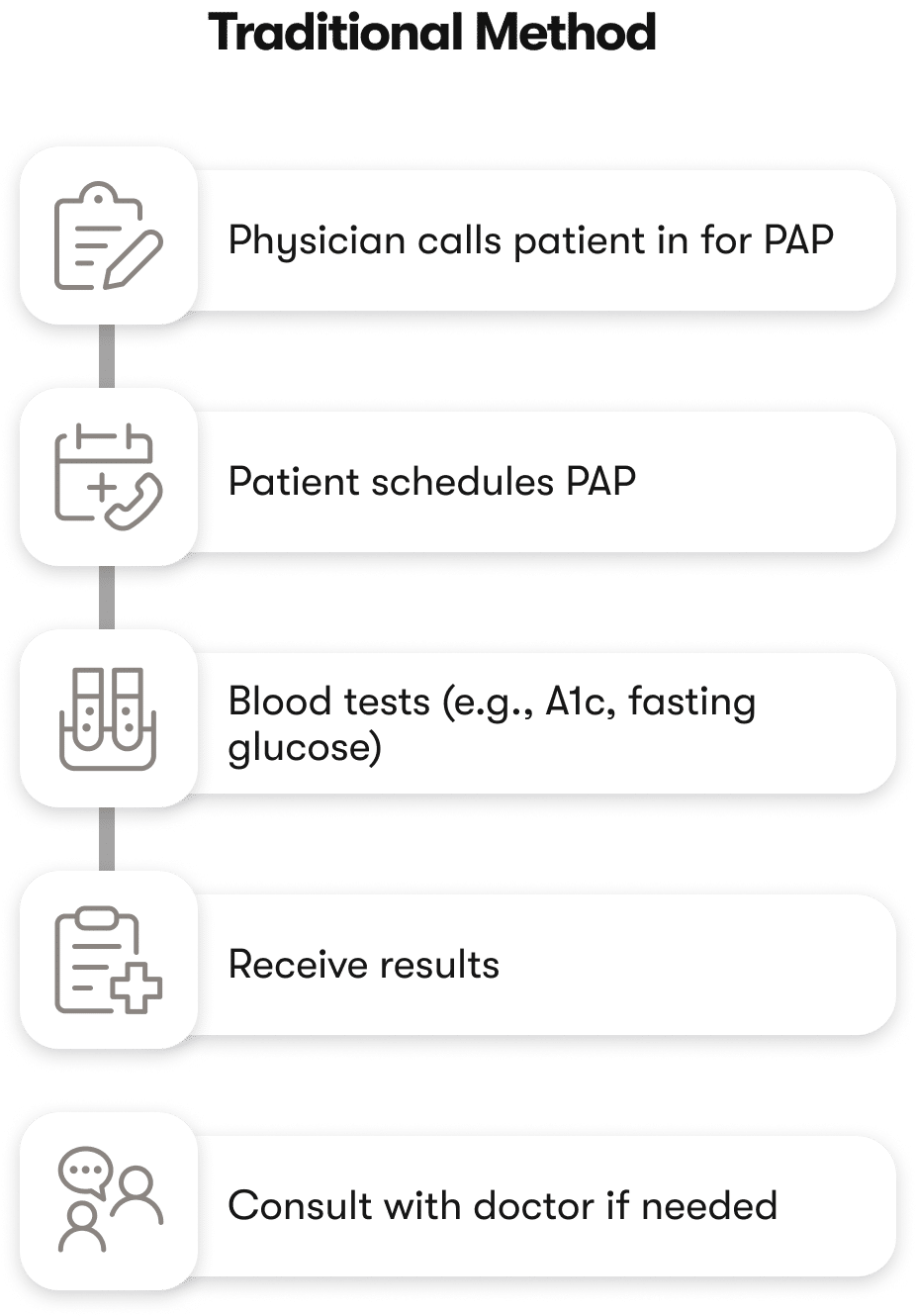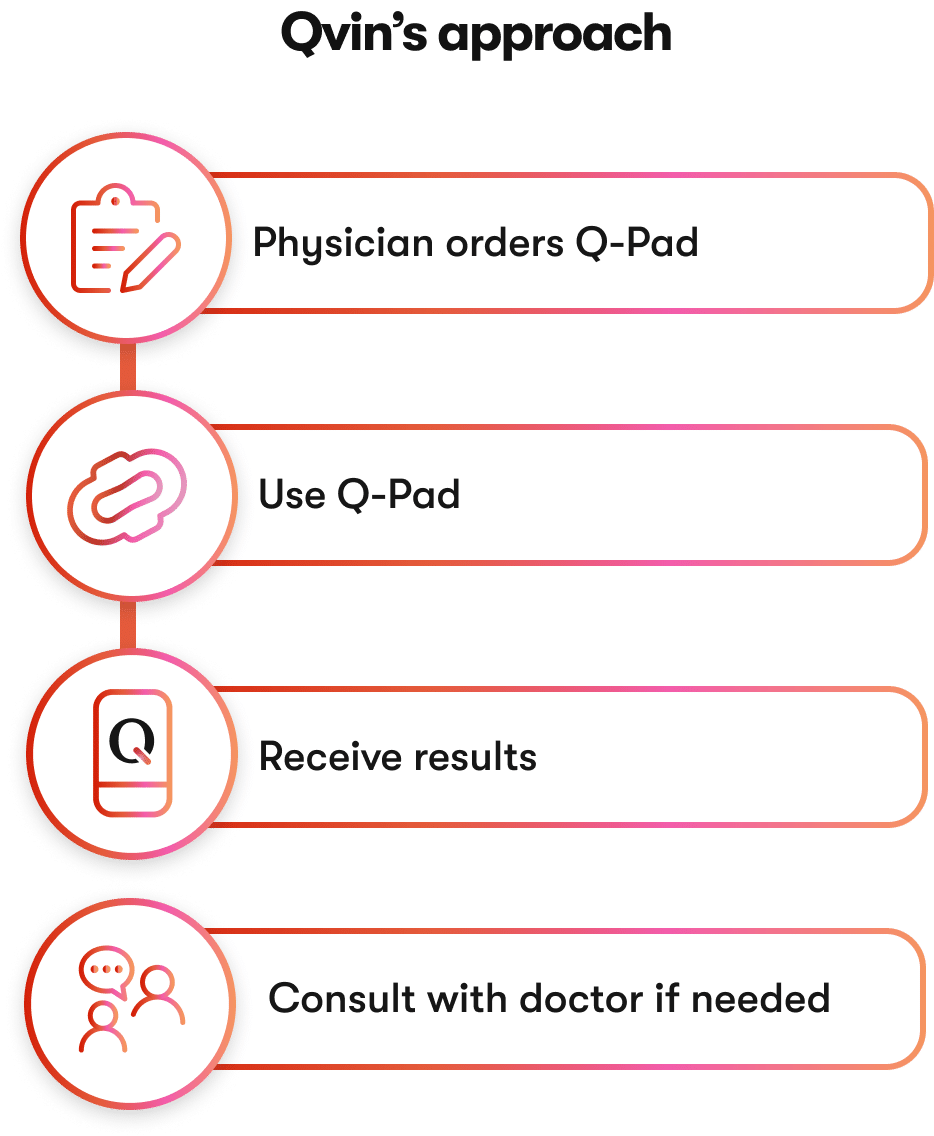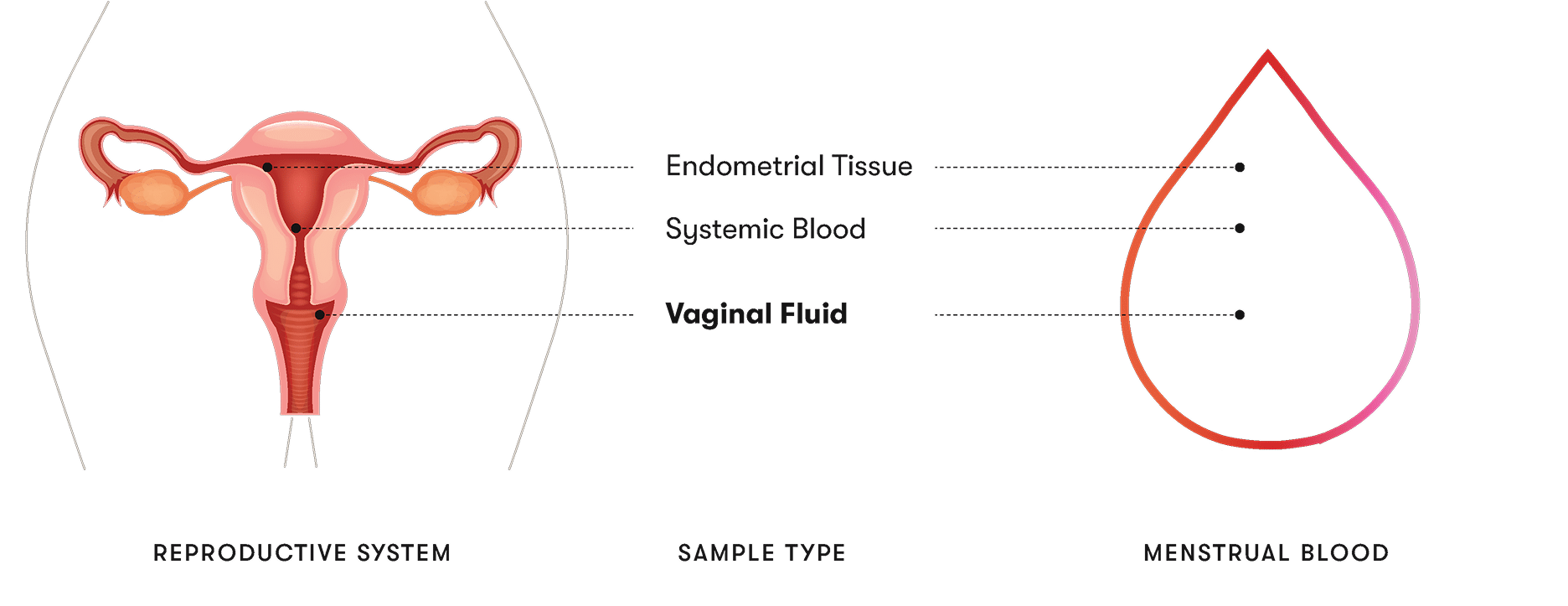DIAGNOSING CONDITIONS
Undestanding
Adenomyosis
Adenomyosis happens when the tissue that normally lines the uterus grows into its muscular wall. Early detection and proper management are essential to improve quality of life and reduce the impact of this condition.
HOW THE CURRENT SYSTEM IS FAILING WOMEN
Early Detection Is Crucial for Adenomyosis Management
Adenomyosis is often underdiagnosed or misdiagnosed until symptoms become severe, leading to complications like chronic pelvic pain, heavy menstrual bleeding, and infertility. Delayed diagnosis can significantly impact quality of life and limit treatment options.
Menstrual blood may provide a more accessible and innovative approach to earlier adenomyosis detection.
Adenomyosis by the Numbers
Women experience fibroid-related symptoms or health concerns in the US.
Peak age range for adenomyosis incidence.
Average delay before women seek treatment for uterine fibroids.
Qvin Simplifies
Uterine Fibroid Screening


Partner with Qvin
THE PROBLEM
TBD
TBD
THE SOLUTION
Qvin makes blood work accessible, increasing
early detection, reducing costs, and saving lives.

Rationale
Menstrual blood represents a biologically relevant and minimally invasive source for detecting gynecological conditions such as adenomyosis. It contains endometrial and myometrial cell debris, immune cells, and soluble biomarkers derived from the uterine lining, which are shed during menstruation. This makes it a highly reflective medium of uterine pathophysiology. Recent work by Burghaus et al. identified promising peripheral blood biomarkers for adenomyosis, including S100-A12 (AUC 0.701) and sFRP-4 (AUC 0.615), which are implicated in inflammation and Wnt signaling respectively—pathways active in uterine disorders [1]. Since menstrual blood is in direct contact with affected tissues, these markers are likely to be present and potentially more concentrated, reinforcing the potential of menstrual effluent for early, non-invasive detection.
Q-Pad
The Q-Pad, a modified menstrual hygiene product embedded with a dried blood spot strip, offers a simple and scalable solution for menstrual blood-based screening. It allows passive collection of menstrual effluent, which contains the same protein biomarkers identified in serum. Notably, Burghaus et al. reported that biomarkers such as S100-A12 and sFRP-4 distinguished adenomyosis from controls with moderate diagnostic accuracy in blood samples (AUC up to 0.701) [1]. Translating these biomarkers to a Q-Pad platform could further improve accessibility to early detection tools for adenomyosis. Moreover, the ease, comfort, and privacy of self-collection can enhance uptake, particularly among women with limited access to specialist care or imaging diagnostics.
Research
[1] Multicenter evaluation of blood-based biomarkers for the detection of endometriosis and adenomyosis: A prospective non-interventional study, Burghaus S. et al., International Journal of Gynecology & Obstetrics, 2024.
JOIN US
Adenomyosis screening improves
quality of life.
Be a part of the solution and transform adenomyosis care.
Funding
If you are a philanthropist or represent a non-profit and would like to support our innovation through funding opportunities, please fill out the form and our team will get back to you.
Research
If you are a philanthropist or represent a non-profit and would like to support our innovation through funding opportunities, please fill out the form and our team will get back to you.
